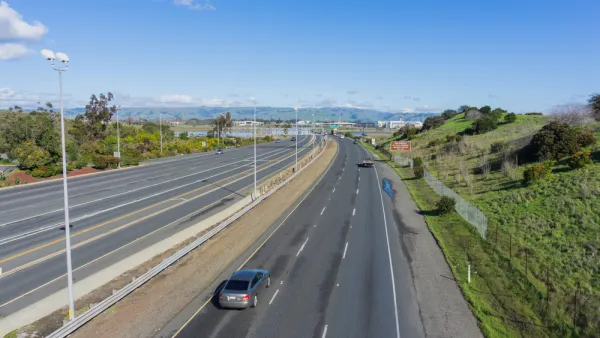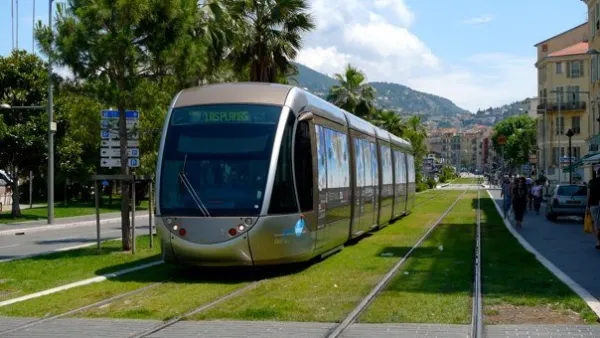In the early days, trolleys and trains carried 400,000 passengers a day over the Brooklyn Bridge. With continued growth in pedestrian traffic, a former transit commissioner says a rail renaissance might not be so far-fetched.
"'People took trains across the bridge,' says former Transportation Commissioner Sam Schwartz. 'At one point, there were four tracks across the bridge. More than 400,000 people a day in those early decades used the Brooklyn Bridge every single day.'"
"'The Brooklyn Bridge walkway is getting so popular that we may have to begin to think, How do we accommodate all the pedestrians? Should we put the roads on a diet? Should we introduce some kind of transit service? Probably not a bus service, but maybe it will be a light rail service going across the bridge,' says Schwartz. 'So in the next 75 years ‘til its bicentennial, I think the bridge probably will go back to a more transit-oriented bridge.'"
FULL STORY: Brooklyn Bridge Could Become More Transit-Oriented In Future

National Parks Layoffs Will Cause Communities to Lose Billions
Thousands of essential park workers were laid off this week, just before the busy spring break season.

Retro-silient?: America’s First “Eco-burb,” The Woodlands Turns 50
A master-planned community north of Houston offers lessons on green infrastructure and resilient design, but falls short of its founder’s lofty affordability and walkability goals.

Delivering for America Plan Will Downgrade Mail Service in at Least 49.5 Percent of Zip Codes
Republican and Democrat lawmakers criticize the plan for its disproportionate negative impact on rural communities.

Test News Post 1
This is a summary

Test News Headline 46
Test for the image on the front page.

Balancing Bombs and Butterflies: How the National Guard Protects a Rare Species
The National Guard at Fort Indiantown Gap uses GIS technology and land management strategies to balance military training with conservation efforts, ensuring the survival of the rare eastern regal fritillary butterfly.
Urban Design for Planners 1: Software Tools
This six-course series explores essential urban design concepts using open source software and equips planners with the tools they need to participate fully in the urban design process.
Planning for Universal Design
Learn the tools for implementing Universal Design in planning regulations.
EMC Planning Group, Inc.
Planetizen
Planetizen
Mpact (formerly Rail~Volution)
Great Falls Development Authority, Inc.
HUDs Office of Policy Development and Research
NYU Wagner Graduate School of Public Service





























